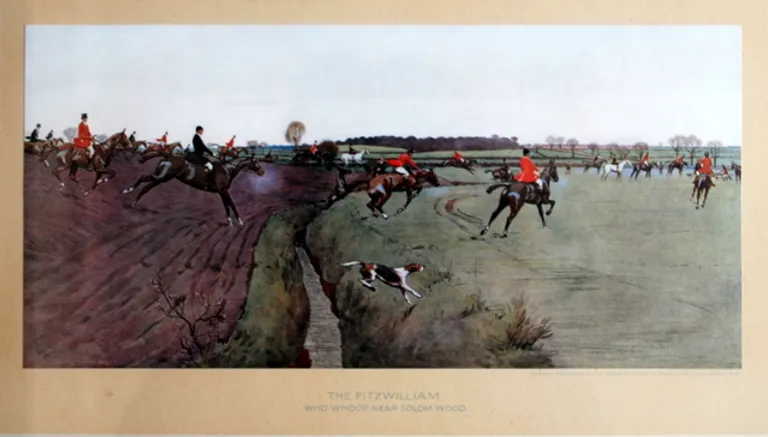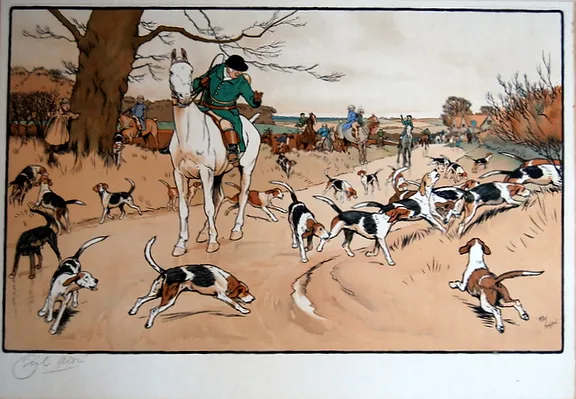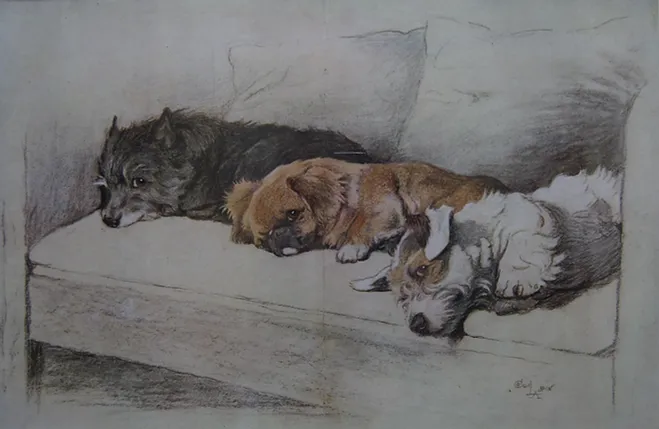Cecil Aldin paintings for sale
Cecil Charles Windsor Aldin, RBA (1870-1935)
Cecil Charles Windsor Aldin, (28 April 1870 – 6 January 1935), was a British artist and illustrator best known for his paintings and sketches of animals, sports, and rural life. Aldin executed village scenes and rural buildings in chalk, pencil and also wash sketching. He was an enthusiastic sportsman and a Master of Fox Hounds, and many of his pictures illustrated hunting. Aldin's early influences included Randolph Caldecott and John Leech.
He joined the Chelsea Arts Club and held his first exhibition in Paris in 1908. An exhibition in Paris in 1909 was received with much acclaim and extended his fame to a wider audience. He illustrated the 1910 edition of Charles Dickens' The Pickwick Papers. A popular book by Aldin was Sleeping Partners, a sequence of pastel drawings of his dogs on a couch. It included his Irish Wolfhound Micky, a puppy he purchased from Florence Nagle as a gift for his wife, and his favourite model, Cracker, a Bull Terrier with a dark patch over one eye. Aldin moved to the Henley area as his interest in hunting, horses and dogs increased and in 1910 he became Master of the South Berkshire Hunt as well as being associated with other local packs. He lived at The Abbots, Sulhamstead Abbots from 1913 to 1914 and was church warden of St Mary's church
At the outbreak of the First World War Aldin was the sole Master of the South Berkshire Foxhounds and became a Remount Purchasing Officer in charge of an Army Remount Depot. The newly formed Imperial War Museum asked in 1919 to purchase two of his wartime paintings. The painting A Land Girl Ploughing is considered among the most iconic images of the work of the Women's Land Army from World War One. Aldin lost his son, Dudley at Vimy Ridge in 1917, which affected him deeply for many years and had a profound effect on his style of work.



